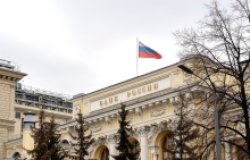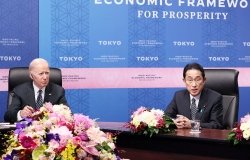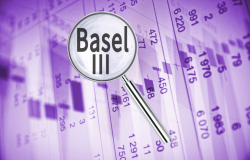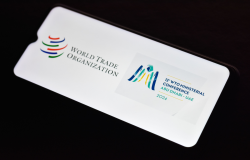Russia's Sliding Ruble
"As if Russia did not already have enough worries, with the security issues associated with the Sochi Olympics and the growing unrest next door in Ukraine, it now faces severe downward pressure on its currency," writes Will Pomeranz.
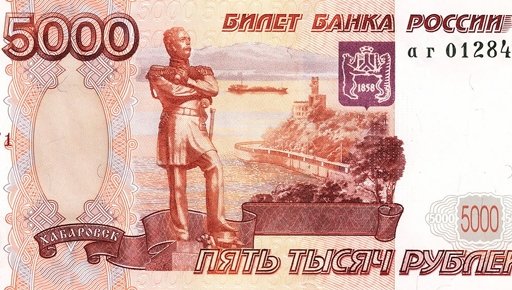
As if Russia did not already have enough worries, with the security issues associated with the Sochi Olympics and the growing unrest next door in Ukraine, it now faces severe downward pressure on its currency. Any currency crisis flirts with economic opportunity and political disaster at the same time. The falling ruble can address some of Russia’s structural economic shortcomings, but only if other financial resources are made available in the process.
Russia is not alone in seeing its currency plunge. Turkey, South Africa, Argentina and Thailand have all experienced precipitous declines in their respective currencies since the beginning of 2014.
A common refrain runs through all these cases. The end of the U.S. program of quantitative easing and foreign investors’ rapid retreat from emerging markets has jolted the currency market, creating uncertainty in its wake. Throw in Russia’s low growth rate, high levels of capital flight and endemic corruption and one has all the conditions for a perfect currency storm.
January was a particularly bad month for the Russian ruble, with the currency falling more than 6 percent against the euro-dollar basket. The ruble rebounded a bit in early February, but it has again resumed its downward trend, with many experts speculating that the currency has yet to find its bottom.
The currencies of Russia’s post-Soviet neighbors also are in freefall, most notably in Ukraine, where currency controls have been introduced to save the hryvnia from total collapse. Kazakhstan, meanwhile, preemptively devalued the tenge by 19 percent in an attempt to keep its economy—and its exports—competitive.
To date the Russian government’s response to its currency woes has been reasonably restrained, unlike during the 2008-09 crisis when the Central Bank quickly went through $200 billion in reserves to defend the ruble. Russia currently possesses almost $500 billion in foreign exchange reserves. So to the extent that Russia has a rainy day fund, it is not raining hard enough, from the Central Bank’s perspective, to justify a major intervention to slow the ruble’s slide.
A falling ruble, in fact, solves several problems for the Russian government while setting the stage for a potential economic recovery. President Putin made several big campaign promises in 2012, especially in terms of increased social spending, that put significant strains on the Russian budget last year. Since the Russian government can make these payments with cheaper rubles, the burden on the budget has shrunk.
The decline in the ruble’s value also presents opportunities for Russian exporters, since their products naturally become more competitive abroad as the ruble declines. Though it appears unlikely that most Russian companies are in a position to profit from this changing dynamic, Russia’s wheat exports are up dramatically thanks to the declining ruble.
Russia brings other advantages to this crisis as well, including a balanced budget and a steady stream of hard-currency earnings that are not tied to value of the ruble, thereby allowing the state to replenish its coffers at a consistent rate. So one can clearly identify the scenario where Russia not only survives this devaluation but theoretically comes out in a better place than where it started.
But not all currency crises have happy endings. A weaker ruble portends a lower standard of living for many Russians. The specter of inflation further hovers over Russia as its citizens invariably will now chase after imported consumer products with cheaper rubles.
But the big unknown is whether Russia is flexible enough to benefit from the current financial crisis. As the ruble weakens and the price of labor and other inputs fall, Russia should be in a position to replace expensive imports with more affordable Russian-made goods. Such substitution occurred after the 1998 currency crisis and ultimately contributed to Russia’s sustained recovery.
Yet today, it remains an open question whether Russia possesses adequate financial and human capital to spark such business investment. Over the past decade, Russia’s entrepreneurial spirit has been snuffed out through excessive government regulation, corruption, and the steady rise of state-owned enterprises. The legal environment is so suffocating that Russia may not have sufficient reserves of entrepreneurs willing to assume the risk and invest in the Russian market.
Russia also still suffers from disastrous capital outflows. More than $60 billion dollars left the country last year for various destinations in the offshore banking system—and this money is exactly what Russia requires to buy equipment and otherwise invest in domestic business in order to take advantage of the falling ruble. Yet there is no sign that this money is returning onshore any time soon, especially if the government continues to talk about taxing Russian offshore companies doing business in Russia.
No supplemental investment means no sustained economic turnaround and the growing likelihood that a falling ruble will mirror a weakening economy, as opposed to reversing it. And as recent events in Argentina and Turkey suggest, such a development is a recipe for political failure. In both of these countries, a collapsing currency has fueled speculation as to the long-term prospects of their leaders. President Cristina Fernandez and Prime Minister Recep Tayyip Erdogan are floundering, in part because to address the currency crisis means to question the very economic policies that have sustained their popularity during their many years in power.
President Putin has not had to face this choice as of yet, but that day of reckoning may be approaching if Russians realize that basic Western consumer goods, foreign travel, and other perks of Russian capitalism are now beyond their reach.
Russians have weathered several currency crises over the past thirty years; so far, no one is shouting that the sky is falling. However, a currency crisis that is not contained could easily spill into politics, something that Putin wants to avoid at all costs. If the latter occurs, then it will be officially raining in Russia, and money will be no obstacle in any attempt to stabilize the ruble.
About the Author

William E. Pomeranz
William Pomeranz, the Director of the Wilson Center’s Kennan Institute, is an expert guide to the complexities of political and economic developments in Russia, particularly through the lens of law. He leverages extensive, hands-on experience in international and Russian jurisprudence to address a wide range of legal issues, from the development of Russia’s Constitution to human rights law to foreign investment and sanctions. He is also the author of Law and the Russian State: Russia's Legal Evolution from Peter the Great to Vladimir Putin (Bloomsbury, 2018).
Read More
Kennan Institute
The Kennan Institute is the premier US center for advanced research on Russia and Eurasia and the oldest and largest regional program at the Woodrow Wilson International Center for Scholars. The Kennan Institute is committed to improving American understanding of Russia, Ukraine, Central Asia, the Caucasus, and the surrounding region though research and exchange. Read more
